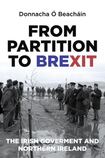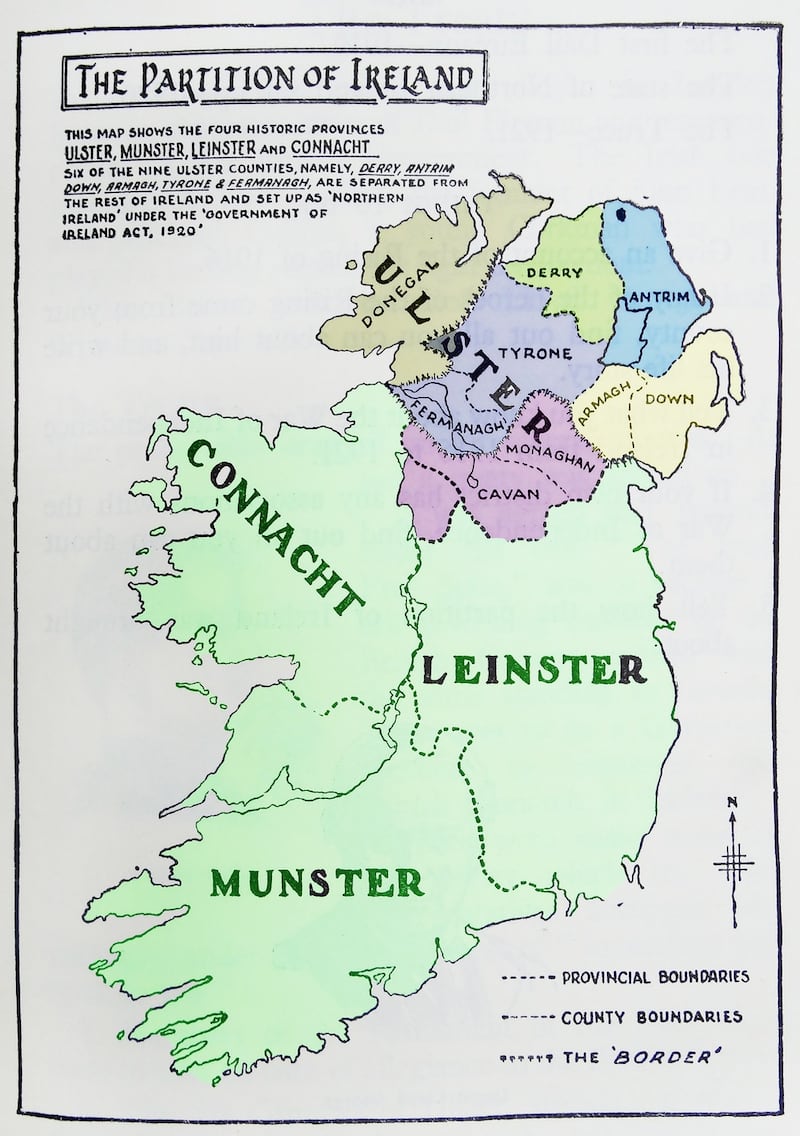
This book begins by claiming it challenges “the idea that Irish governments have pursued a consistent set of objectives and policies towards Northern Ireland”, revealing instead “a dynamic story of changing priorities”. It is a dubious assertion; the idea of consistency on the part of the southern state in relation to Northern Ireland has not had much currency; indeed quite the opposite.
As far back as 1983, historian Michael Laffan in The Partition of Ireland 1911-1925 made the point that southern nationalist attitudes to the border were "schizoid" and that a passionate commitment to reunion by a minority "was diluted by general apathy or ambivalence". Likewise Clare O'Halloran in Partition and the Limits of Irish Nationalism (1987) identified a profound ignorance about Northern Ireland and a mindset about partition "founded upon evasion, equivocation and ambivalence" which enabled the Irish Free State to simultaneously deny and acknowledge the legitimacy of the Northern state.
What this book does successfully expose, however, is the true extent of the ambivalences and inconsistencies, using an impressive wealth of archival material in both Britain and Ireland unavailable to an earlier generation of researchers. It is, of course, timely given Brexit, the current spotlight on the Border and the ignorance about partition that has far too often been on display since Britain voted to leave the EU in 2016. While the author is keen to cover a century of history, this leads to a somewhat uneven narrative and structure; the bulk of the book actually covers the period from the 1970s onward and some chapters adopt a rather scatter-gun approach. It would have benefited from a tighter focus, but the use of varied and revealing sources is impressive.
Ulster case
The British prime minister who presided over the partition of Ireland, David Lloyd George, was honest in private that “our Ulster case is not a good one”; he felt the British government was “unassailable” when it came to insisting Ireland remain in the Empire “but if you come down from that height and fight in the swamps of Lough Erne you will be overwhelmed”. It would have suited the British government if Ulster unionists had accepted an all-island solution to the Irish problem during that era. Instead, the tactic of promising a boundary commission to review the Border was deliberately vague while at the same time over-sold to Irish nationalists during the Anglo-Irish Treaty negotiations as something that could scupper the viability of Northern Ireland. Confusion and delusion reigned in Dublin while the chairman of the Boundary Commission, Supreme Court judge in South Africa Richard Feetham, decided firmly in 1925 that Northern Ireland “must still be recognised as the same provincial entity”.
The Free State government, led by WT Cosgrave, was humiliated by this but there was also evidence at that stage of a psychological detachment from Northern Ireland as reflected in the refusal to allow northern nationalist MPs to address the Dáil; de Valera too, in the 1930s, despite his assertion that until the day he died partition “would be the first thing in my mind”, refused the request of northern nationalists to be heard in the Dáil. When pondering partition, de Valera also remained stubbornly wedded to an insistence that Britain “had done it, now let them undo it”. This rhetoric of moral righteousness was sustained, but the second World War period diluted any sympathy that existed for Dublin’s stance.

When John A Costello replaced de Valera as taoiseach in 1948 he insisted his cabinet would “give some hope of bringing back to the country the North-Eastern counties of Ulster” but attempts to arouse Europe’s indignation fell flat and only served to embolden unionists. There were occasional, tokenistic visits to NI by officials from the Department of External Affairs to supposedly gauge opinion, or in the words of the Department, “if only to show the six-county people that we are still with them.” De Valera, back in power for periods of the 1950s, comforted himself with the boast “politically, we have been successful as far as five -sixths of the national territory is concerned” and that “time will settle the other thing”, hardly a confident assertion. His successor Seán Lemass preferred to assert in 1963 that the solution would be “found in Ireland by Irishmen”, seeking to focus on the idea of a dynamic economy in the Republic enticing unionists. Northern Ireland prime minister Terence O’Neill retorted that there was “no economic advantage in joining with Eire” which could have been read as bolstering the argument that there might one day be such an advantage.
Panic
The outbreak of the Troubles prompted panic and a directive to the Irish army emphasised the need for preparations “to train the forces for incursions into Northern Ireland”. But according to British ambassador Andrew Gilchrist, taoiseach Jack Lynch responded, when asked what he would do if Northern Ireland was handed to him on a plate, “I would faint”. It is O Beacháin’s mining of these kinds of private memoranda that gives this book an interesting edge, though there is a tendency to underestimate the ongoing tensions between the Irish government and northern nationalists; we are told that from 1970 “the Irish government established immediate and intimate bonds” with the SDLP, but there was a lot of distrust and resentment also. The inability of Fianna Fáil to react coherently to 1970s Anglo-Irish initiatives and British prime minister Ted Heath’s tendency to be accusatory and unpredictable are well traced, as is the Sunningdale Agreement phase and the path that led to taoiseach Liam Cosgrave asserting his government accepted Northern Ireland was part of the UK “as a fact”. But there was also during that decade what is described as governments’ “melancholic fatalism”. An indication of the messy contradictions was that Jack Lynch was terrified of the idea of a British declaration of intent to withdraw from Northern Ireland even though his own party’s policy document called for precisely that.
In 1980, Charles Haughey was initially seen by Whitehall as “no friend of ours but not, perhaps, actively hostile”. The following year Haughey claimed Northern Ireland constituted “the first national issue”, but diplomat Seán Donlon told the British ambassador that none in Iveagh House had had “any meaningful talk” with Haughey on the subject, while a British source suggested those working in the Department of Foreign Affairs were “for the most part Fine Gael sympathisers”. The archival material from both London and Dublin is well used here; when Garret FitzGerald mentioned the possibility of joint authority to deal with nationalist alienation in Northern Ireland Thatcher responded: “I don’t like that word [alienation]. That’s a Marxist word.” Also revealing was that Thatcher “never bothered to learn how to pronounce the names of her Irish counterparts” and even fell asleep during one meeting with FitzGerald.
The Anglo-Irish Agreement of 1985 was over-sold by too many, including Fine Gael’s Michael Noonan who foolishly suggested Dublin “had been given a major and substantial role in the day-to-day running of Northern Ireland”. In reality, more involvement had to wait until what the author terms the “age of consent”, though not before John Hume was pilloried for talking to the IRA. The book offers a concise narrative of the peace process and the extent to which “red letter days” often proved to be yet more false dawns. The book finishes by examining the impact of the Brexit referendum and the author ponders the possibility of a united Ireland, suggesting that even a majority vote in its favour would guarantee nothing because “for many unionists the question is not Northern Ireland’s right to self-determination but rather a permanent right for their supporters never to be subjected to majority rule anywhere on the island of Ireland”. Acceptance of this however, would amount to acceptance of the permanence of partition and would also be about moving the goal posts as set down by the Belfast Agreement. But where those goalposts end up, or even what kind of game is being played, remains to be seen.
Diarmaid Ferriter is professor of modern Irish history at UCD and an Irish Times columnist. His latest book, On the Edge: Ireland's Offshore Islands, A Modern History, is published by Profile Books













